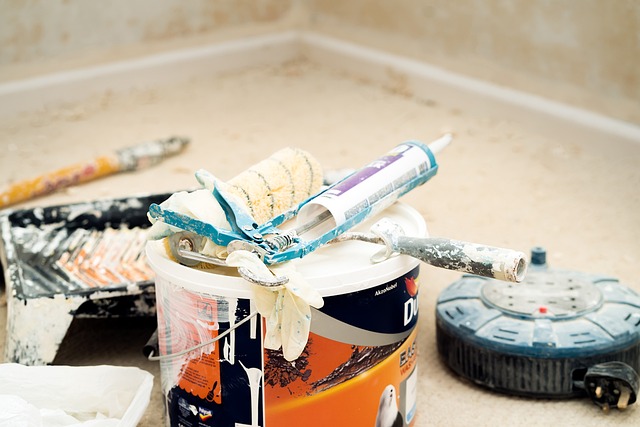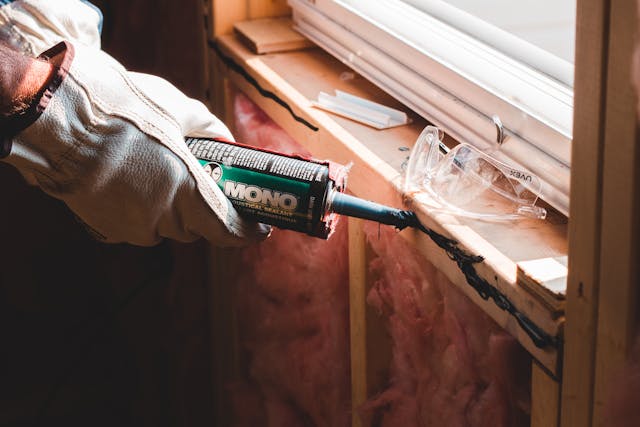Caulk is often used for a broad range of tasks by professionals and do-it-yourselfers alike. This substance is often used by plumbers to seal the space around a bathtub, shower surround, or toilet foundation. In order to minimize heat transmission and keep moisture and pests out, caulking may also be used to cover gaps around windows and doors.

Caulk is a tool that do-it-yourselfers may use to waterproof joints and form a seal, but it won’t work as well if it doesn’t have enough time to cure and dry. Furthermore, caulk that hasn’t had enough time to cure correctly can not stick to the intended surface as well, which might cause it to peel, chip, or split. To find out how long caulk takes to dry, use this instructions.
How Much Time Does Caulk Need to Dry?
It is crucial to allow the caulk to fully dry before utilizing the shower or adding water to the tub when caulking around a bathtub or shower in a bathroom. Similarly, rain might harm recently applied caulk beads around windows or doors in the house, so it’s best to wait for the weather to clear before caulking these spaces.
Depending on the kind of caulk, drying durations might vary, but generally speaking, caulk takes between 30 and 2 hours to dry completely. Drying to the touch, however, does not imply that the caulk is waterproof or resilient enough to withstand pressure or scratches; rather, it only serves to guarantee that the caulk will stay attached to the targeted surface. Prior to using the area normally again, wait until the caulk has completely dried.
Comparing Drying and Curing Times
Often, a do-it-yourselfer is more interested in learning how long caulk takes to cure than how long it will dry. Despite the phrases’ clearly distinct meanings, many individuals use them interchangeably, which further complicates matters.
When water and other moisture are removed from caulk, leaving behind a shell that is touch-dry, this process is referred to as drying. Depending on the kind of caulk, this should normally take two hours or thirty minutes. Dry caulk is susceptible to moisture until it has completely dried and is not sturdy enough to withstand physical harm.
Drying takes a lot less time than curing. Until the caulk completely freezes, this procedure requires maintaining an appropriate temperature and humidity level. Curing, which is necessary to produce a watertight seal, starts as soon as the caulk is exposed to air. While certain varieties of caulk may take up to 12 days to completely cure, most brands require between 24 to 48 hours.
drying times according to caulk kind
Depending on the kind of caulk, there are differences in the drying period. Three kinds of caulk are often used for do-it-yourself projects: silicone, acrylic latex, and polyurethane-based caulk.
The most popular choice for bathrooms is silicone caulk, which dries quickly—between thirty and eighty minutes. This kind of caulk takes about 24 hours to completely dry, but it adheres nicely to nonporous objects like metal or glass.
The greatest places for acrylic latex caulk to be utilized are tiny joints and gaps in wood, such the space around a window frame. Although this kind of caulk dries to the touch in a matter of minutes, it may take up to ten days to completely cure.
Although it may be used inside for a number of applications, polyurethane-based caulk is most suited for outdoor usage because to its flexibility, durability, and waterproof nature. Plan the project timetable appropriately, however, since this kind of caulk takes a long time to cure—up to 12 days—and it takes a long time to dry.

How to Tell Whether the Caulk Is Dry
For information on the drying time after caulking, see the manufacturer’s website on the side of the tube. Usually, the caulk’s maker will indicate how long it will take to dry and cure completely. You will have to estimate the drying time if you can’t recall the manufacturer’s name or have misplaced the box.
Caulk typically takes between thirty minutes and two hours to dry. You may check if the caulk is dry or not by softly touching it after this period of time. Just take care not to wipe the caulking or apply too much pressure, as this might cause it to distort and interfere with its ability to cure.
How to Reduce the Time It Takes to Dry
Temperature, humidity, and ventilation are some of the factors that determine how long caulk takes to dry. The caulk’s precise formula and age may also have an impact on how long it takes to dry. In light of this, there are a few techniques do-it-yourselfers may use to shorten the drying period.
To speed up the silicone caulk’s drying process, use a humidifier.
Wait until the caulk has completely dried before wetting it.
To speed up the drying process of acrylic latex caulk, use a dehumidifier.
When the temperature is between 40 and 80 degrees Fahrenheit, apply caulk.
Caulk that has expired should not be used as it may not dry and cure correctly.
To achieve quicker drying and curing periods, use a caulk recipe that dries quickly.
A hair dryer should not be used since the heat may melt or loosen the caulk.
Improve airflow after applying acrylic latex caulk by using a fan.
